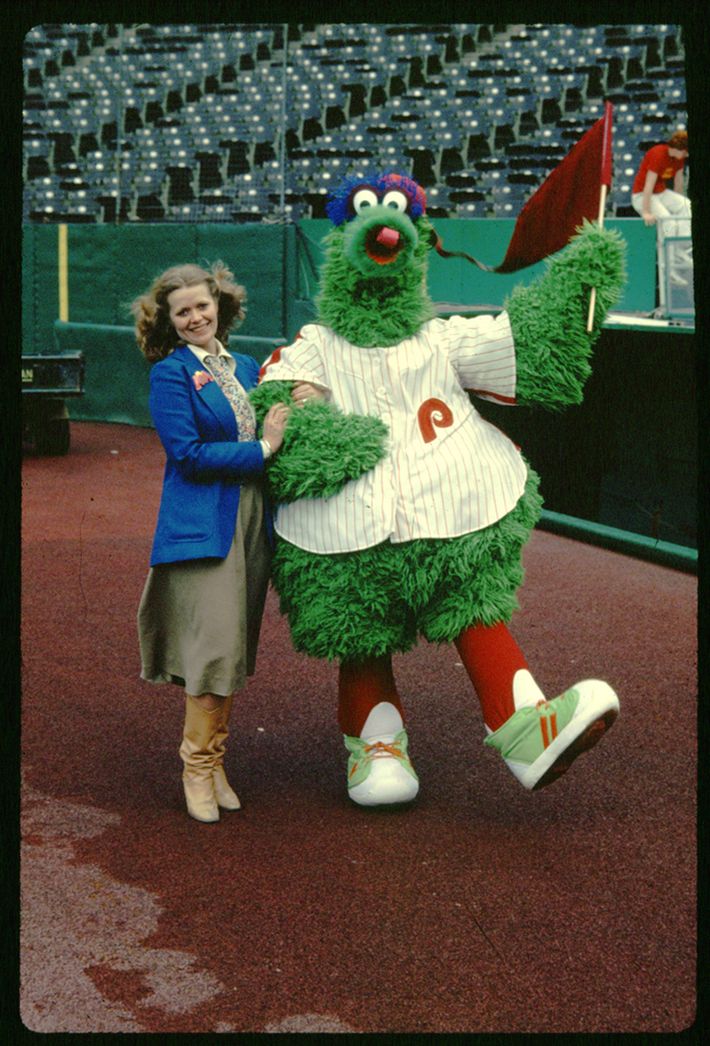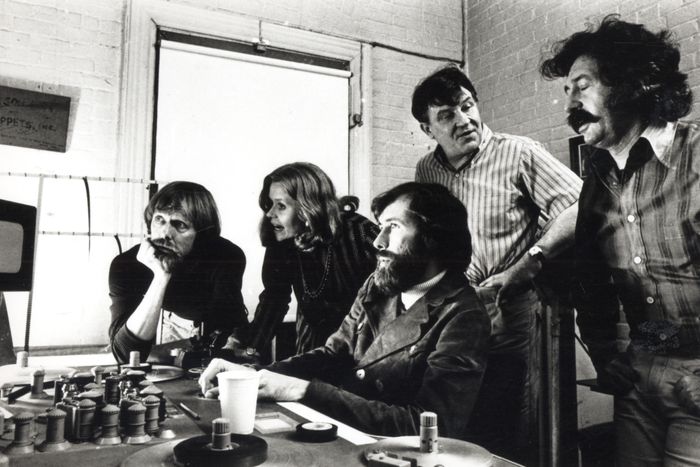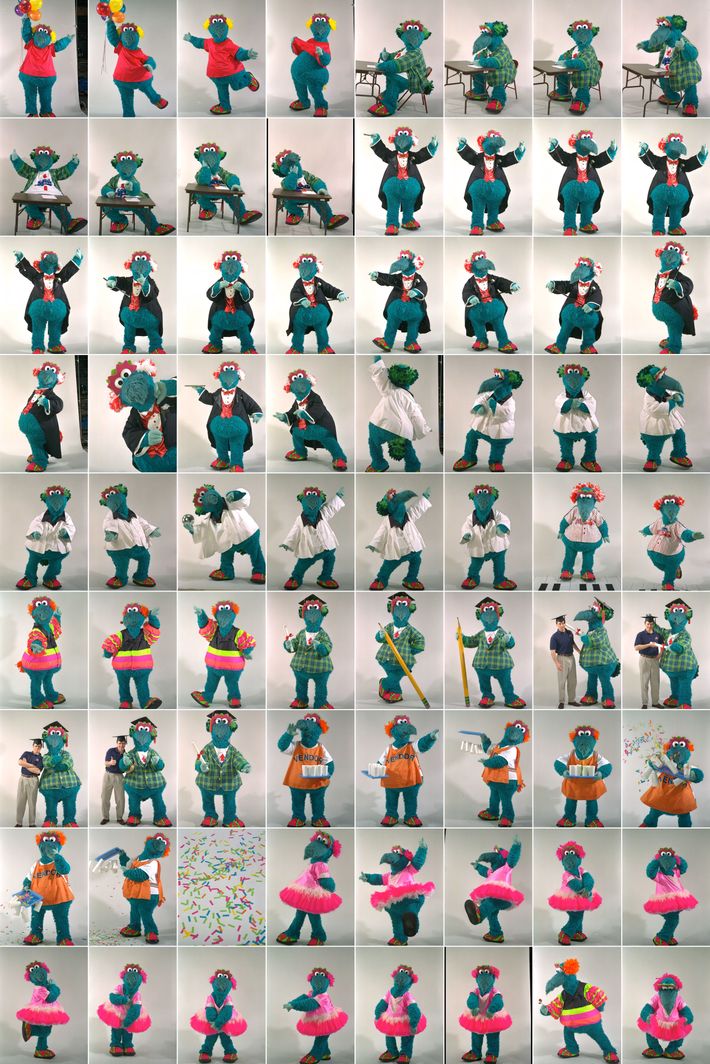
This article was featured in One Great Story, New York’s reading recommendation newsletter. Sign up here to get it nightly.
What do the Phillie Phanatic and Miss Piggy have in common? At first glance, not much, but they do share a brazen self-confidence and sense of entitlement — the expectation that they can do what they will and everyone else will just have to get used to it. Maybe it runs in the family. In a way, they’re siblings. They share a creator, Bonnie Erickson, who is also behind a dozen other sports team mascots and some of the most famous members of the Muppet universe.
Erickson, curly-haired and quick-witted, lives in Brooklyn Heights, where evidence of the 82-year-old’s influence can be seen in every corner of the apartment she shares with her husband and business partner of nearly 50 years, Wayde Harrison. There are signed sketches from Maurice Sendak, sent as thanks for Erickson’s design of Where the Wild Things Are toys. There are reminders of Erickson’s work as design consultant on the original Fraggle Rock (she oversaw the build of the characters). As a consultant to the Children’s Television Workshop, which still produces Sesame Street and now goes by Sesame Workshop, she also oversaw the design and development of Tickle Me Elmo, possibly the first must-have, fighting–in–the–aisles–of–Toys ’R’ Us–on–Christmas Eve toy. (There’s no sign of Elmo here, though. “I always thought he looked worryingly apoplectic,” Erickson says.) And then there’s the Phanatic bobblehead, complete with matching piggy bank.
Her mascots are all, as Erickson puts it, “fanciful. And I think of them all as gentle anarchists.” A mascot, she says, begins with a backstory and a personality, not with drawings and swatches. This is the same process she followed when creating Miss Piggy in 1974 in response to a request from Jim Henson: He needed three pigs for a sketch titled “Return to Beneath the Planet of the Pigs.” The puppet originally had button eyes and long, dirty blonde hair; Erickson modeled her after torch singer Peggy Lee, a favorite of her Minnesotan family. “She had that low voice and just seemed really out there for women singers of the time,” says Erickson. “It was her personality, really, that inspired the pig for me.” Soon after, Miss Piggy was scheduled to appear on The Herb Alpert Show and needed a glow-up. “I had to throw on big eyes, a long wig, and drape her in a silk dress,” said Erickson. “I wired on some gloves, because the original pig had hooves, and there was no time to make hands. And I had to put pearls around her neck. Normally, on a puppet you see the join between the neck and the body. That’s why she got the fake pearls.” This Miss Piggy, infinitely more glamorous, is much closer to the Muppet we know today.
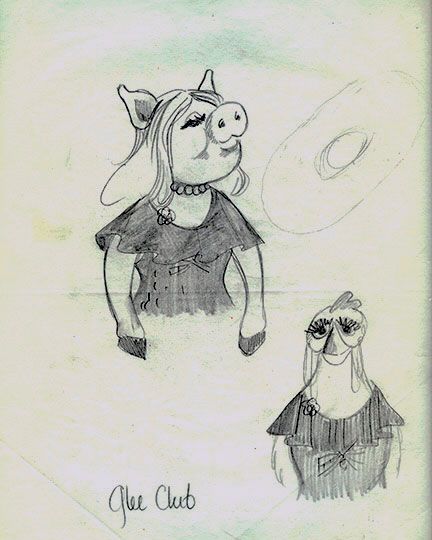
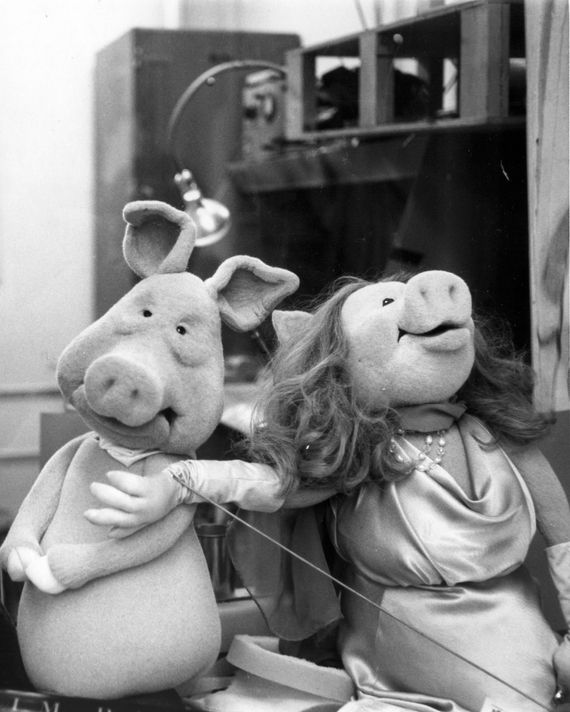
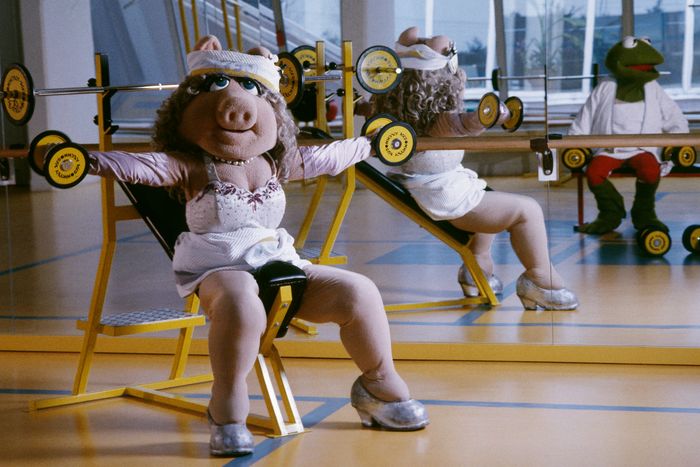
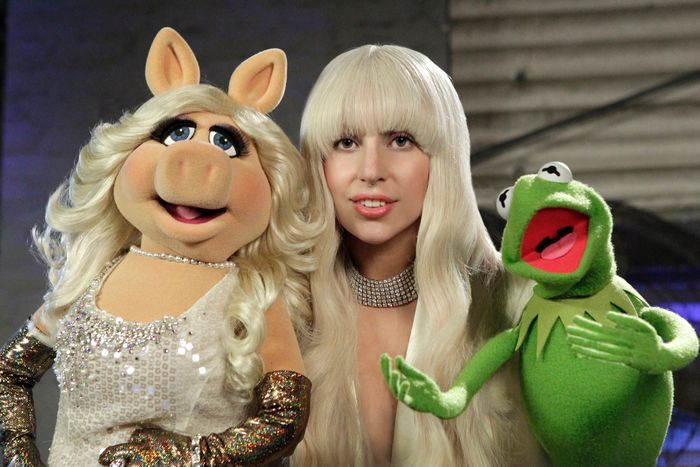
The pig’s career evolved fast, from chorus pig to celebrity, and Erickson’s career developed in tandem. She designed other famous Muppets, including Statler and Waldorf (the cranky old critics in the balcony; these were inspired by the men Erickson would glimpse through the windows of New York’s Yale Club). She ran the Muppet workshop for years, working closely with Jim Henson. She had never planned to create sports mascots, but by 1977 both The Muppet Show and Miss Piggy were roaringly successful. Bonnie had married cancer researcher and photographer Harrison, and they decided to launch their own company with Erickson on the creative side and Harrison handling the business. A rented loft on lower Fifth Avenue became the Harrison/Erickson workshop. They created new kinds of puppets: chatting Happy Meals for McDonald’s commercials, talking taste buds for Budweiser commercials that ran on Saturday Night Live. Then, not long after they’d opened their doors, Henson sent them a referral: The Philadelphia Phillies baseball team wanted a mascot.
Erickson wasn’t a baseball fan — in meetings, Harrison advised her not to even talk about sports, she knew so little — so she followed the same process as she had for Muppets: a backstory (the Phanatic comes from the Galapagos Islands, is of indeterminate age), a unique shape (the snout was inspired by a megaphone), and a “puppeteer” who was instructed to wear the costume even in his apartment to make his movements seem more natural. The Phillies’s previous mascots, Phil and Phillis, had been people dressed in colonial garb wearing giant, stiff heads. They didn’t goof around or harass the other team; they just … stood there.
The Phanatic, from the beginning, was meant to be seen in movement. He was bright green, immediately identifiable in a crowd; pear-shaped with a midsection that swayed back and forth with each thrust; and had an upturned feather duster of a tail that has inspired furious debate about whether or not he is a bird. (He is, according to Erickson, “a purely fantasy animal.”) He leaps, he rolls, he fires off the hot-dog cannon, he wreaks havoc. He’s a Puckish figure, reveling in physicality. He rapidly became one of the best-loved and most enduring mascots of all time.
Growing up in St. Paul, Minnesota, in the late 1950s, Erickson fantasized about becoming an actor in New York. “I started subscribing to The Village Voice when I was in high school. I had this whole picture of New York City before I ever got here. And that just kept me moving.” After her sophomore year at the University of Minnesota, where she studied art and drama, she finally headed to New York, driving with a friend in an aged 1951 Buick with a sign that read “New York or bust!” She never finished her degree or lived in Minnesota again.
Erickson moved to the Village, sharing a second-floor walk-up with eight others (“breakfast was a little container of milk and Devil Dogs”) and picking up various jobs: usherette at a Fifth Avenue cinema, shopgirl at Saks, seller of toilets. Eventually, she found a job assisting costume designer Patricia Quinn Stewart, who worked on Broadway and Off Broadway shows (“I worked for her for seven years, and she taught me everything I know about costumes”). Erickson had an interest in sewing and clothing design that went back to childhood, when she’d done crochet and quilting projects with her grandmothers. Stewart, she says, “hired me after I told her I’d had some experience. I went in the first day, and sewed on the machine backward. She came in and said, ‘You know you’re sewing backward?’ and I said, ‘Oh yeah, I always do that.’ I was not going lose this job!”
In 1970, a friend called and said Jim Henson was looking for a costume designer. “He did all these very abstract, crazy things on different television shows, and stuff like that with this weird, weird sense of humor, and I loved it. And I just thought, Well, he’s too famous, what would he need me for?” She got the job, though, and not long after Henson hired her to run the entire workshop — ordering materials, hiring staff, overseeing design — in addition to designing what would become some of the longest-lasting Muppets. “I told Jim I never really intended to have a full-time job; I like doing a lot of different things. Jim said, ‘Well, we do a lot of different things here. And maybe, you know, just give it a try.’ And so I did, and I stayed for seven years.”
But she remains relatively unheralded. If Erickson had the inflated confidence and gift for self-promotion of Miss Piggy (“She’s probably a little egotistical but never daunted in anything she wants to try to do”) more people might know her name. It’s not that Erickson doesn’t have faith in her creations, but she’s got a strong streak of midwestern modesty, an aversion of being seen in any way to put herself forward. “I think artists are really funny,” she says. “On the one hand, everything they do is so valuable, you couldn’t possibly put a price on it. And on the other, it’s like, How could anybody want this?! … It’s a really hard thing to go to anybody and say, ‘Here’s this genius thing I’ve done.’” And Erickson is quick to credit other factors (Henson, luck, Frank Oz, who was Miss Piggy’s puppeteer through 2002) for much of her career success. Others might point to evidence of her talent, such as the fact that the Phanatic was voted America’s favorite sports mascot or that she has had a hand in everything from Sesame Street to Fraggle Rock to making a doll that Bette Midler sold on tour.
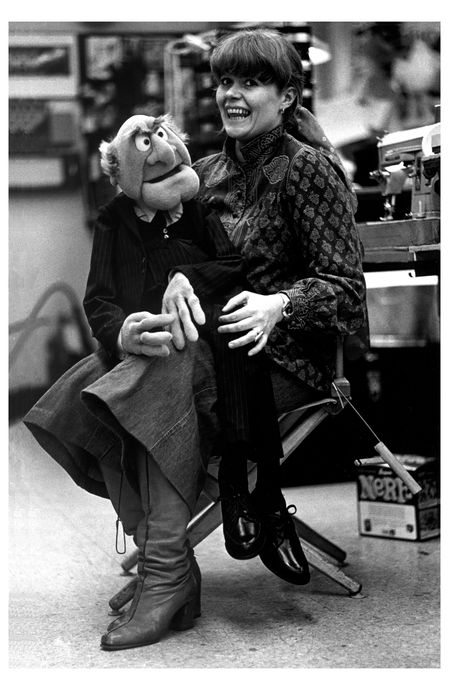
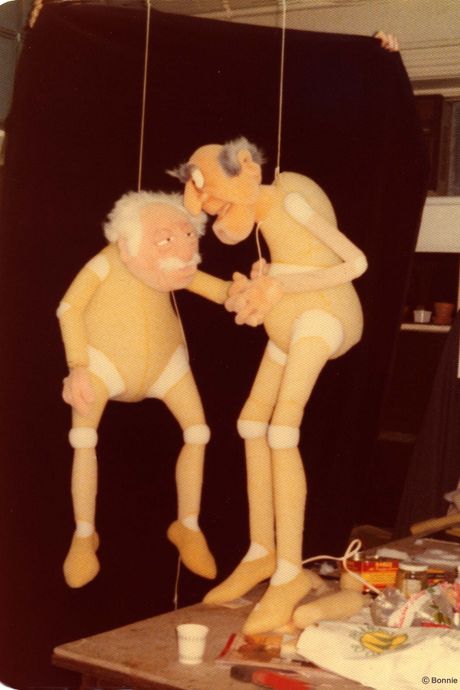
Erickson would eventually create over a dozen other mascots for the NBA, NHL, NFL, and MLB. A handful of them are still entertaining crowds, including KC Wolf (Kansas City Chiefs), Stuff the Magic Dragon (Orlando Magic), and Youppi! (first with the Montreal Expos; then the Montreal Canadiens). The Phanatic and Youppi! are in the National Baseball Hall of Fame.
“When we started working with the Phillies,” she says, “they thought they were in the baseball business. We said, ‘No, you’re in the entertainment business. If people don’t go to baseball games, they go to the beach, or they go to the amusement park, or they do something else to entertain themselves.” Erickson’s mascots share the amusing details and colorful touches that characterize her uniquely creative mind, seeking out the entertaining and the humorous in everything. (And if it doesn’t exist, she’ll just invent it. On one side of her bedroom you’ll see a porch, complete with steps, and a façade designed to look like a smaller version of Erickson’s childhood home, right down to the flagpole. That’s the entrance to the en suite bathroom. )
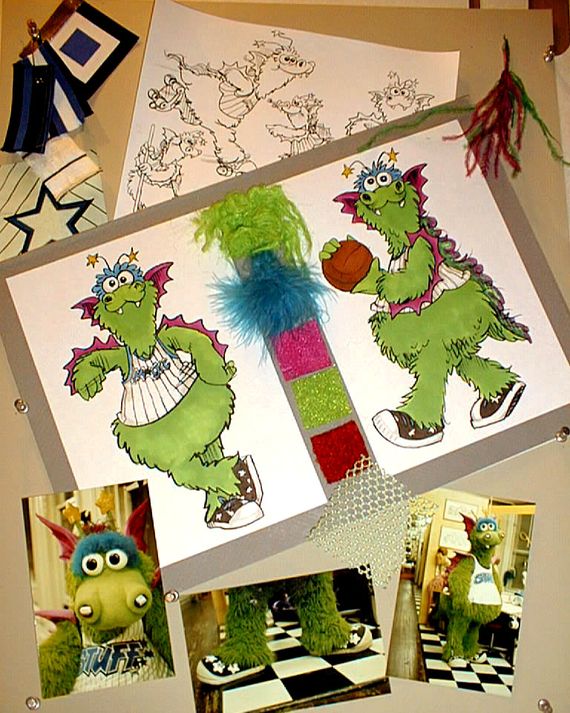
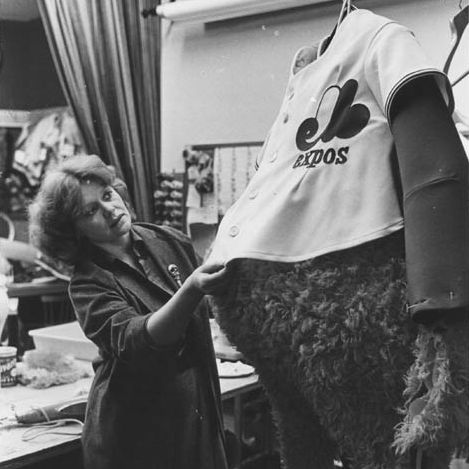
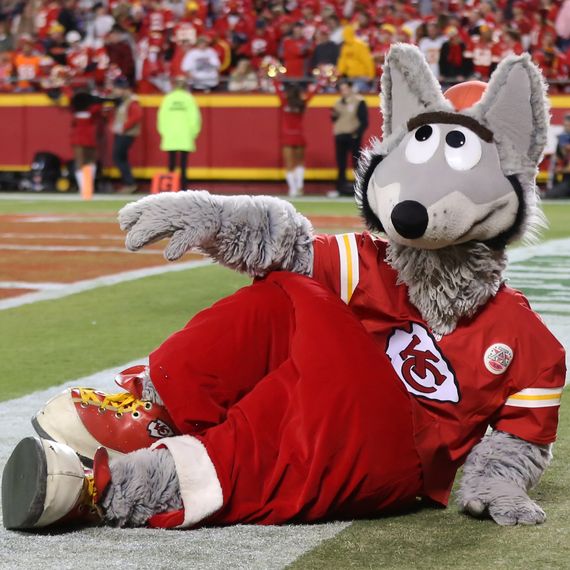
After years working with the Henson Legacy to commemorate Jim’s creations, these days Erickson spends time archiving her original papers and materials and donating these to museums, though tables in Erickson’s workroom are still heaped with crafting supplies and pieces from the collections she and Harrison have amassed over the years: tiny toys, decks of cards, puppets from different eras, an esophagus tube — this last a relic from the days when she designed kids’ toys and needed to make sure they couldn’t choke on them. But her creations are going strong. Miss Piggy is in the Smithsonian. The Phanatic is still running around launching the hot-dog cannon. The Muppets Mayhem TV show recently won an Emmy (Erickson created Zoot, the Mayhem’s sax player; co-designed Animal, the drummer with frenetic energy, with Henson and Michael Frith; and built Janice, the singer). And she’s contemplating a new project with Sport, a mascot she designed in 1994. He’s blue with a long, beaky nose and wears a huckster’s plaid jacket; Erickson likes to think of him as a kind of jolly shill who might try to sell you a pen, or a watch, or whatever you need. “He’s very funny,” she says. “I think he’d be a big hit on TikTok.”


